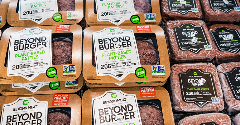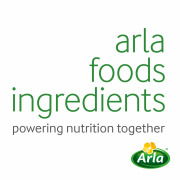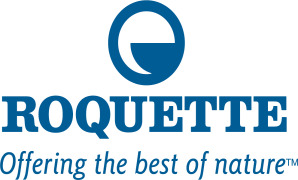News
Industry innovates with new high protein ingredients
26 Aug 2019Consumer interest in high protein foods and drinks continues to grow, and a few enterprising companies have responded to the trend by manipulating protein-rich ingredients to make them even higher in protein.
Protein has been a major trend for the past few years, evolving from the sports nutrition domain into the mainstream. Some are looking for high protein foods to help them feel fuller for longer, while others aim to preserve muscle and bone mass as they age, and increasingly amateur athletes are also seeking out protein for building muscle and for post-exercise recovery. According to Innova Market Insights, the number of new food and drink products with a protein claim doubled from 2013 to 2017, and over 10% of new products now feature some kind of protein claim.

With the rise of protein in nearly every product category, and a rapid increase in high protein NPD, ingredient manufacturers have been ramping up their product development too. Israeli firm Equinom, for instance, has developed non-GMO peas with 50% more protein than standard peas, responding to industry demand for cost-effective alternative protein sources. It is also working on non-GMO soybeans with 50% more protein than commercially available varieties, potentially tapping into a growing market in the United States in particular for soy protein produced without genetic modification.
The company has achieved its high protein ingredients through computerised plant screening, which identifies desirable traits. It then combines this information with traditional breeding techniques, thereby speeding the breeding process significantly. In late 2018, Equinom agreed a partnership with French pea protein supplier Roquette to produce its high protein peas on a commercial scale.
Elsewhere, Protein Industries Canada – a collaborative project between plant protein ingredient producers and the food and feed industries – announced its first investment in July 2019. The group aims to bring new high protein hemp and canola ingredients to the market with up to $153 million of investment over the next four years.
Interest in more natural foods and concerns about the health and environmental impacts of eating too much meat and dairy have led to a strong rise in interest in plant-based proteins. However, innovation in dairy derived proteins is also on the rise. Arla Foods Ingredients, for example, has developed a low volume whey protein ingredient specifically for medical nutrition. According to Innova Market Insights, the number of global medical nutrition beverage product launches featuring whey protein grew an average of 9.9% a year from 2012 to 2017.
Innovation in the protein sector, whether plant-based or animal-derived, is at the crossroads of a number of nutritional trends, such as interest in low carb, keto and paleo diets, the enduring quest for satiety among those seeking to lose weight, and the rise of more serious amateur athletes. The food and beverage industry has accelerated innovation across categories over the past few years, but with new ingredient innovation set to come on line soon, the high protein trend looks set to go from strength to strength.
Related news

PepsiCo formulates ‘naked’ Cheetos and Doritos products
31 Dec 2025
US food giant PepsiCo has launched its Simply NKD range, a move it says reimagines its popular products with new formulations free from artificial flavours, dyes, and colours.
Read more
Debate over ban on ‘meaty’ names for plant-based products reaches stalemate
26 Dec 2025
The debate over a ban on plant-based products using “meaty” terms has reached a stalemate, leaving manufacturers in limbo and still facing overhauls to their marketing and packaging.
Read more
Has ‘clean’ had its day?
22 Dec 2025
Wielding clean-label positioning and fortification as marketing levers is a dangerous strategy, and brands would be better off explaining the hows and whys of the ingredients in their products, say experts.
Read more
Pioneers of circular plastic packaging push for new policies
18 Dec 2025
Some of the world’s largest food and drink companies have grown frustrated at investing in circular packaging systems, as the majority “wait on the sidelines”.
Read more
Whole Foods Market forecasts fibre frenzy for 2026
11 Dec 2025
Whole Foods Market has released its top 2026 trends, predicting that a fibre frenzy will take place next year as health-conscious consumers seek out nutritious, filling options.
Read more
Sorghum emerges as better-for-you hero ingredient
9 Dec 2025
With the launch of Novak Djokovic’s sorghum-based brand, the grain’s popularity in the better-for-you snacking sphere is on the rise, thanks to its nutritional and sensory properties.
Read more
Innovation promise in 'maturing' plant-based dairy alternatives market
8 Dec 2025
Plant-based dairy is a maturing market that still faces significant hurdles around taste, functionality, nutrition, and price, but industry is innovating fast, according to experts speaking at Fi Europe.
Read more
Turning global trade challenges into opportunities
4 Dec 2025
While our food innovation ecosystem is in a healthy place, certain barriers persist. A panel of experts at Fi Europe shared their ideas and strategies for overcoming these, to fully unleash Europe’s potential.
Read more
Celebrating the winners of the Fi Europe Innovation Awards 2025
3 Dec 2025
Food industry stakeholders celebrated as the winners of the Fi Europe Innovation Awards were announced at a ceremony in Paris.
Read more
Yuka’s food scanning app helps consumers make healthier choices
2 Dec 2025
Global food scanning app Yuka helps consumers understand the content of their shopping baskets and shapes producers’ reformulation plans.
Read more

